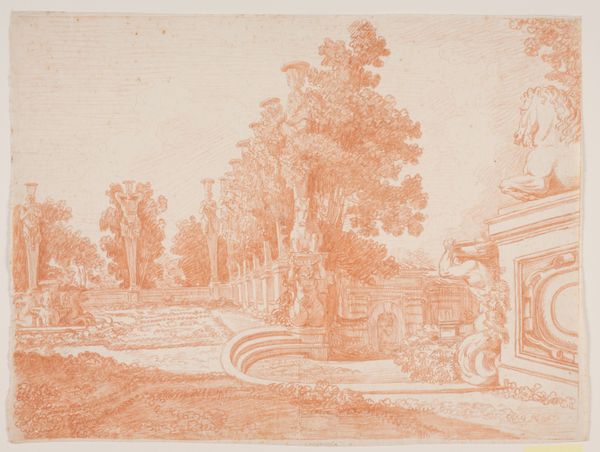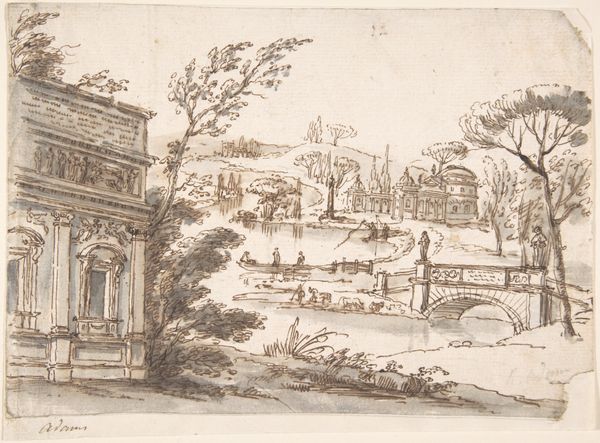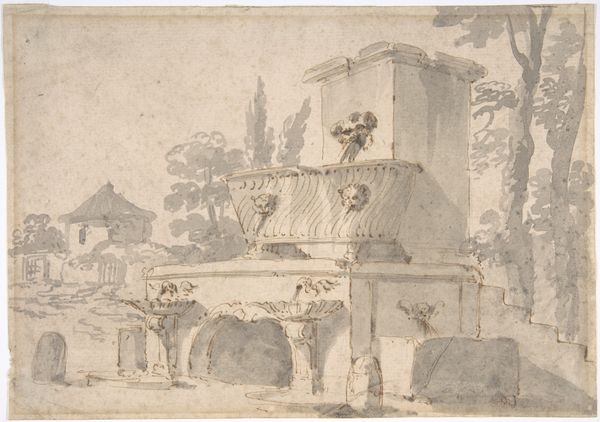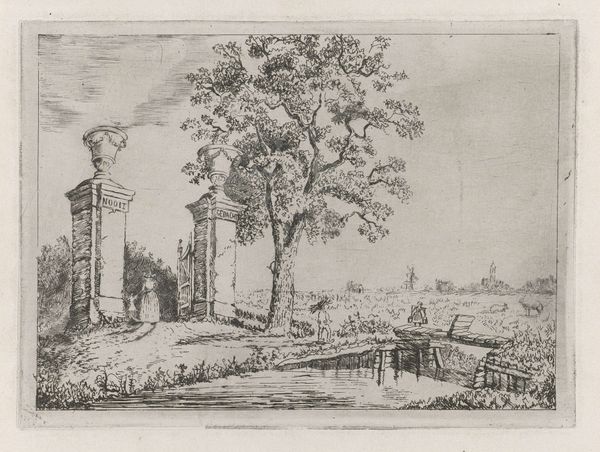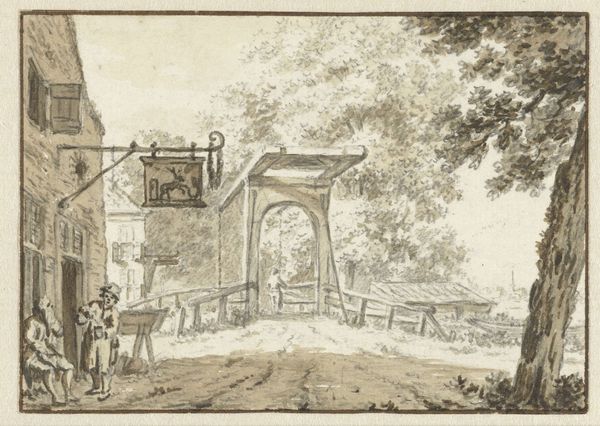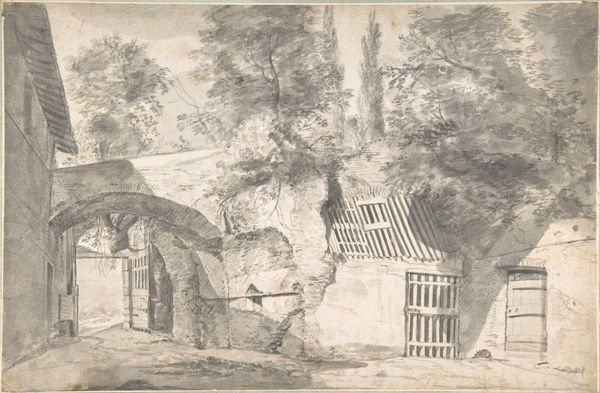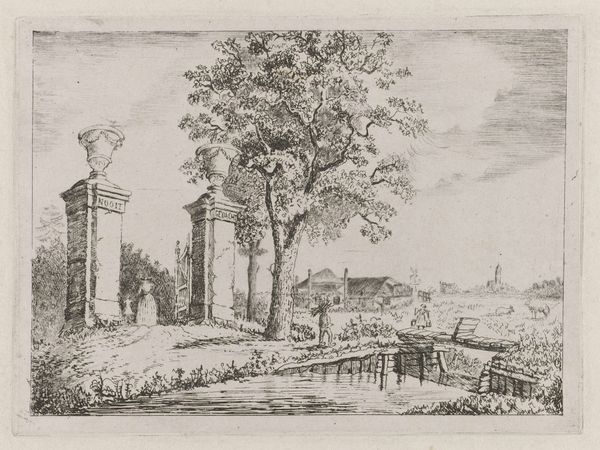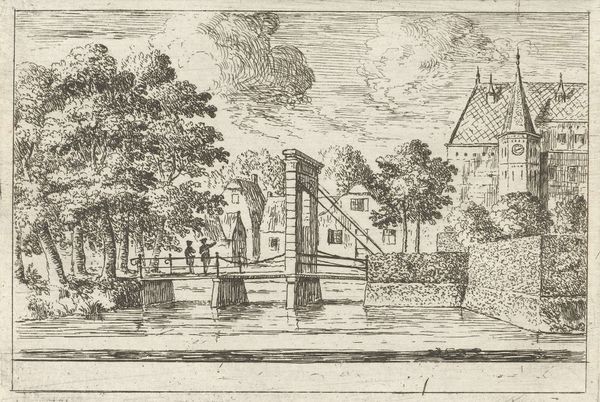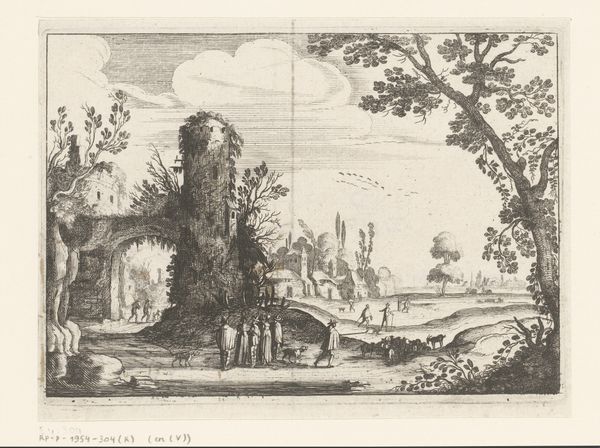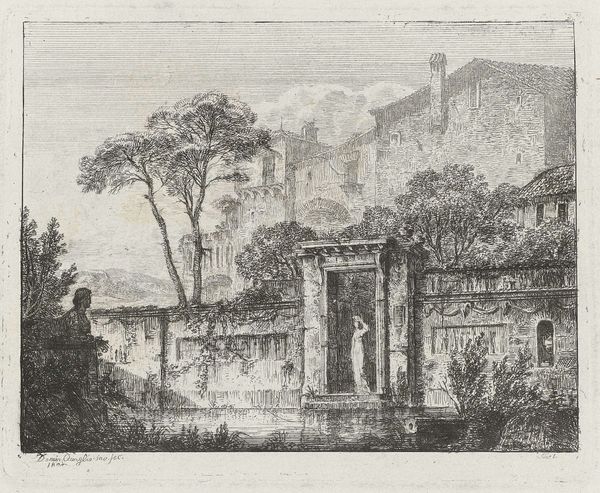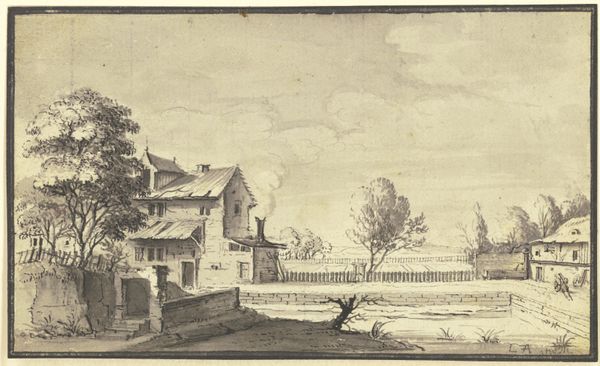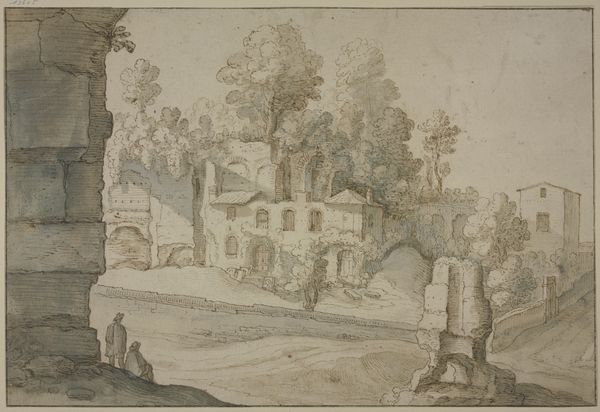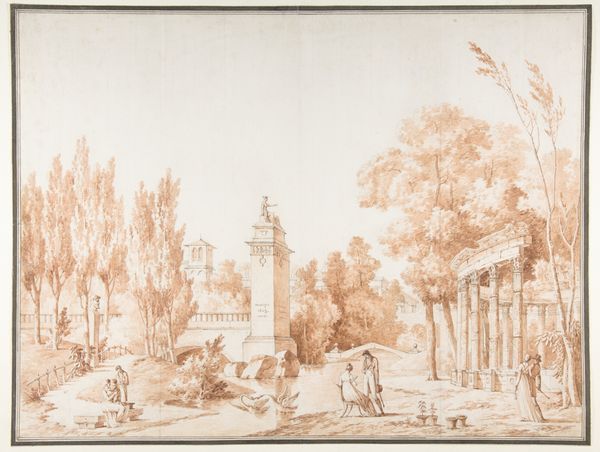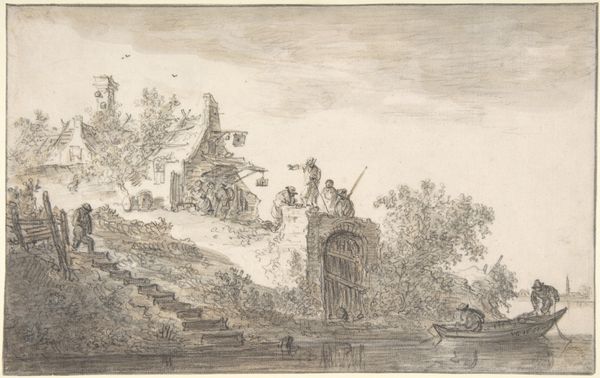
drawing, watercolor, ink
#
drawing
#
baroque
#
landscape
#
etching
#
watercolor
#
ink
#
cityscape
#
watercolor
Dimensions: height 90 mm, width 157 mm
Copyright: Rijks Museum: Open Domain
Curator: Ah, isn't it amazing how a few strokes of ink can transport you? This is Jan de Bisschop’s “Koepoort te Leiden,” believed to have been created sometime between 1648 and 1671. He employed ink, watercolor, and perhaps a dash of sheer poetry to render this cityscape. Editor: My initial impression? Tranquility, but with a strange edge. It’s a quiet scene, certainly, but the almost monochrome palette gives it an austere feel. The fortified gate and architecture loom with an implication of possible control, or a feeling of past struggles—quite literally, the walls have ears...and see all! Curator: I like how you picked up on that austerity. De Bisschop wasn't just documenting; he was imbuing the scene with a sense of place, of history. He captured the quiet dignity of Leiden’s gate. To me, there's a subtle nostalgia in the soft gradations of the ink wash. Editor: And it makes me think about access, about who gets to pass through such gates. It may seem innocuous, but the “Koepoort,” and Leiden itself, has seen wars, economic shifts, social upheavals... Whose stories aren’t being told in this seemingly calm portrayal? The artistic hand guides us, but historical omissions cannot be ignored. Curator: You’re right, it’s not *just* a pretty picture. De Bisschop was a lawyer as well as an artist. Perhaps he chose this angle of the gate on purpose; this moment where he allows the light to reflect so gently. And the life teeming across the bridge. But yes, silence too speaks volumes. It does invite us to ponder. Editor: Precisely. We bring our present-day awareness to art, but that art acts reciprocally. It can reflect the past onto us, shaping our social conscience. This gate is both a threshold and a barrier. Even rendered in delicate watercolors, the piece prompts necessary interrogations about boundaries and who is permitted—or not—to transgress them. Curator: I will look at it now with much deeper appreciation for its potential to make us engage, thanks to you. I do so appreciate the artist's quiet capturing of this scene now, because in many ways it continues to evolve...in memory and on paper. Editor: Thank you. And I agree, in a world fixated on speed, the careful detailing in De Bisschop’s portrayal slows us down. We become quiet witnesses to our potential agency to transform that which must always be challenged.
Comments
No comments
Be the first to comment and join the conversation on the ultimate creative platform.
